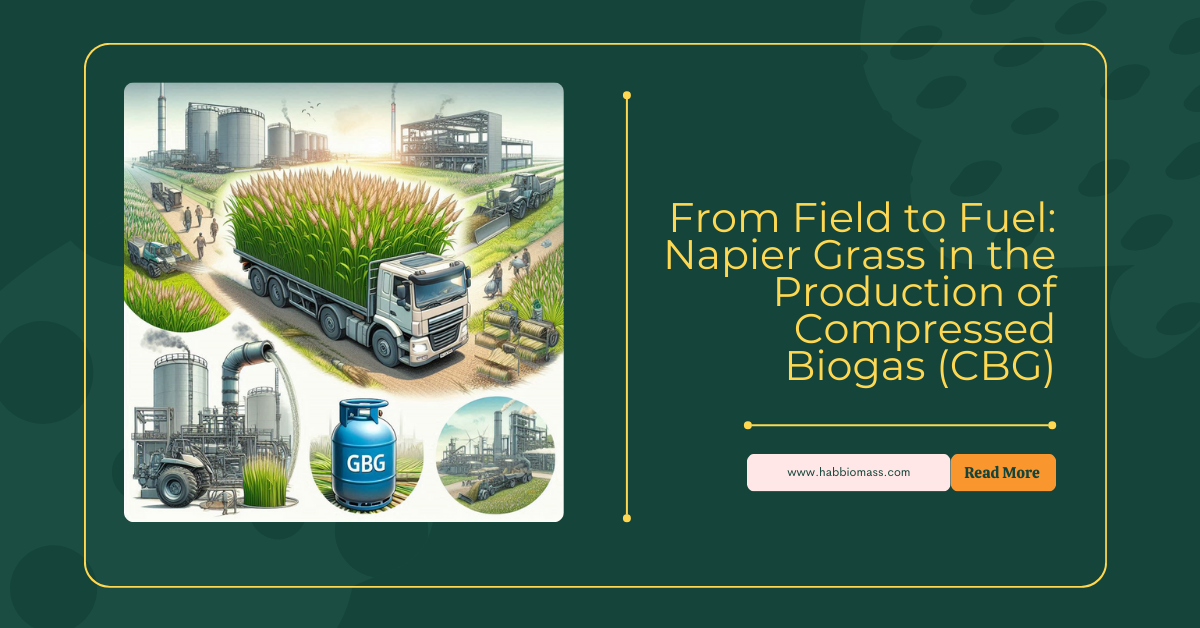Compressed biogas (CBG) is a promising clean fuel that can replace conventional fossil fuels in transportation, electricity generation, and industrial processes. This blog outlines the journey of Napier grass, from its cultivation in the field to its transformation into compressed biogas, highlighting its role in the global push for renewable energy solutions.
Step 1: Cultivating Napier Grass
Napier grass thrives in warm, tropical climates with well-drained soils. It is an ideal energy crop due to its fast-growing nature, reaching maturity within 90 days and producing several harvests annually. Farmers can cultivate Napier grass using minimal inputs, making it a cost-effective crop for energy production.
Step 2: Harvesting and Processing
Once mature, Napier grass is harvested and chopped into small pieces for further processing. The chopped grass is loaded into biogas digesters, where it undergoes anaerobic digestion.
Step 3: Anaerobic Digestion
In the biogas digester, microorganisms break down the Napier grass in an oxygen-free environment. This process produces raw biogas, which is primarily composed of methane and carbon dioxide. The digestion process also generates a nutrient-rich slurry that can be used as organic fertilizer, supporting a sustainable farming cycle.
Step 4: Purification and Compression
Raw biogas is purified to remove carbon dioxide, hydrogen sulfide, and other impurities, leaving behind methane-rich gas suitable for compression. The purified biogas is then compressed and stored as compressed biogas (CBG). CBG has high energy content and can be used as a direct substitute for compressed natural gas (CNG).
Step 5: Distribution and Use
Compressed biogas produced from Napier grass can be used in a wide range of applications, from powering vehicles to generating electricity in rural and urban settings. It provides a renewable alternative to fossil fuels and supports the transition to cleaner energy systems.

